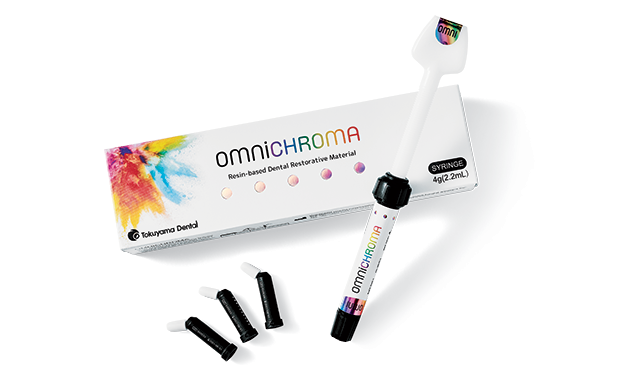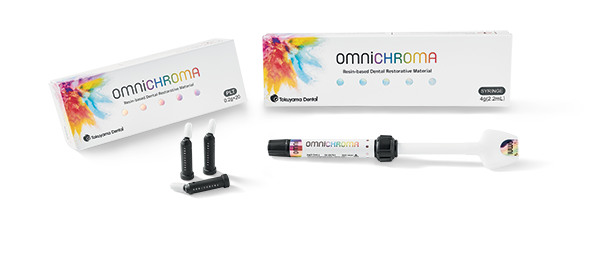How OMNICHROMA is making dentists’ lives easier
Why one dentist says this new material from Tokuyama Dental America is a valuable addition to his office.

Marty Jablow, DDS, is known as “America’s Dental Technology Coach,” and he acts as chief consulting officer with Cellerant Consulting Group. However, he wears many hats, as he consults and coaches while also working chairside treating patients and serving as a key opinion leader for Tokuyama Dental America. As a key opinion leader, he was able to try Tokuyama’s one-shade-fits-all resin composite material, OMNICHROMA, before its launch in February 2019. According to Jablow, this product features game-changing composite technology that makes restorations easier for the dentist to place as well as being able to reduce cost in the dental office.
How has OMNICHROMA’s use of structural color impacted the dental industry?
“This product is already making an impact. What it’s doing is allowing dentists to decrease their costs because instead of having to warehouse a pallet full of different colors, we now can, for the most part, just select one. So, it takes a lot of guesswork color-matching out of the equation and allows it to simplify a procedure that may be more difficult for the patient and the doctor just strictly based on color. Trying to match colors can sometimes be a very difficult thing to do and OMNICHROMA makes that much easier.”
Since you were able to try OMNICHROMA before it launched, would you say since its launch it met your expectations regarding its impact on the industry?
“Not only has it met my expectations, but in many cases, it has exceeded my expectations. My partners, whom I didn’t allow to use the composite before its launch, also think it’s wonderful. I’m not saying it’s completely 100 percent in every single case - no product can do that - but it’s a valuable addition to the armamentarium of composites in my office.”
Read more: A game-changing dental composite
Could you see the technology behind OMNICHROMA being applied within other facets of dentistry in the future?
“If this technology can be extrapolated out into other areas of dentistry, especially when paired with something like 3D printing, this could make a very big difference in the chemistry game of dentistry. One of the biggest challenges in dentistry is always color matching, and anything that can make color matching simpler for both the dentist and the laboratory improves our dentistry. It’s all about exceeding patient expectations and, in most cases, the only thing the patient perceives is color because it’s the only thing he or she can see and know. Therefore, things that make the color match better are obviously better for the patient and better for the dentist and the laboratory.”
Do you think OMNICHROMA makes a doctor’s job easier?
“It definitely makes the doctor’s job easier. Now, doctors are able to avoid having to select colors based on shade guides and everything that goes in between for every single case. The dentist can now reliably, in most cases, pick up a single composite being assured that they’re going to get a very good - if not excellent - match in color to the adjacent tooth structure.”

It can be a hassle to keep rarely used composite in stock. Do you feel that OMNICHROMA can aid practices in providing better results?
“We have a dozen shades that we may stock in any given office to try and match a certain color, and now Tokuyama has brought that down to one. So, it makes the job more efficient, and it also costs the dental office less money because we don’t have to stock all of these colors, some of which we seldom use but we need them there just in case. If we need a lot less ‘just in case’ composites, it’s actually more profitable for the dental office because they don’t have to buy these additional shades that they may have bought otherwise.”
What positive impact do you think this product will have on patient experience?
“That’s pretty simple. Positive patient experience is if the patient looks and says, ‘I can’t see what you just did.’ Hidden in plain sight is really what we aim to do. If a patient can’t see what we’ve done, then that’s great for everyone because that’s what we’re trying to achieve. We want a natural look using a synthetic material to match tooth color, and the better we can do that, the more appreciative the patient will be and the less stress there is on the doctor. OMNICHROMA makes our job much easier. At the same time, the easier it is to match shade, the less time the patient spends in the chair. So now, I’m not necessarily doing all the layering that I used to do to try to make a restoration as lifelike as possible. So, by reducing the number of steps I have to take, it’s positively impacted the patient experience.”
Trending article: 3 tips for overcoming common challenges of shade matching
In conversing with other dentists and dental professionals, has any impact been made or feedback been given that you weren’t expecting?
“Most people I know who have been using this product have given it very positive feedback. In fact, the other dentists I know using OMNICHROMA haven’t had anything negative to say, but instead they’ve raved about how it’s made their lives easier. I usually don’t see that kind of response to most products on the market. Usually people say a product didn’t quite meet all of their expectations, but I haven’t seen that at all with OMNICHROMA. As a general rule, the product has exceeded expectations.”
What would you like to see coming from Tokuyama in the future?
“They’ve developed this technology and introduced it to the world, and I’d like to see them take it to the next level. Now, this is nature we’re dealing with, so I don’t know if that’s possible, but they’ve done something no one else has done right now and I’m sure that since they were able to accomplish this, they will be able to accomplish further improvements both in the technology and in the material so that it will get better over time.”
Top 10 Dental Products Report Videos of 2023
December 30th 2023Whether shot on site at a conference, recorded over Zoom, or captured in some other setting, video was a big part of the content published by Dental Products Report in 2023. The most popular videos of the year include a mix of product evaluations, roundtable discussions and weekly new product roundups. Check out the 10 most viewed videos of the year right here.